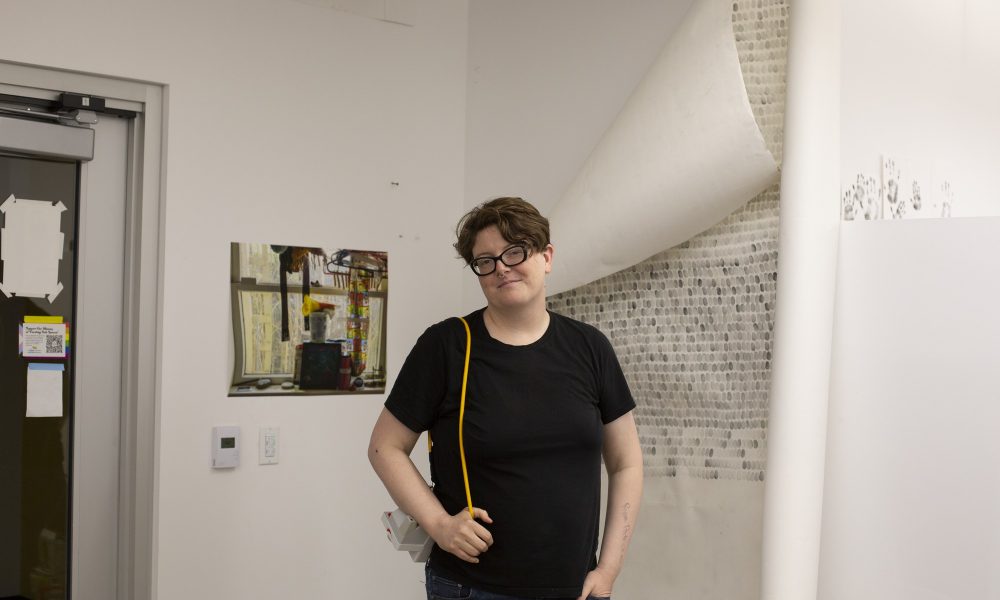By: Julia Goldman and El Nicklin
In this episode of Artist Banter, host Julia Goldman and co-host El Nicklin sit down with parent, artist and MFA photography student sea Krob in their photography studio. The three discuss the themes of parenting, disability and grief related to sea’s identity and how these experiences have transformed into conversations of intergenerational inclusion in art and the visibility of chronic illness within sea’s work.
To see the visual interpretation of these themes and keep up to date with sea’s future projects, follow them on Instagram, @sea.krob.
Below is a written transcription of the audio interview, which features images of sea’s work throughout as visual references for the discussion.
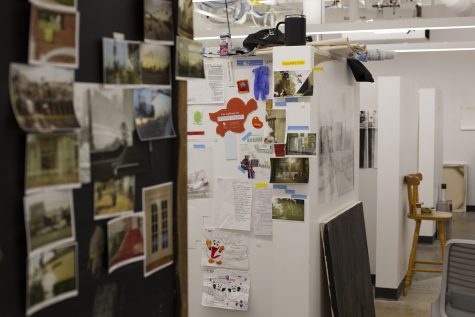
Julia Goldman: Thank you so much for having us in your photography studio and being here today, sea.
sea Krob: Yeah, thank you for having me.
El Nicklin: I wanted you to give an overview — and this is hard to do as an artist, I’m sure. What kinds of topics do you focus on in your work?
sK: I have a lot of things I like to say. I am an artist. I primarily focus in photography. I do dabble outside, but usually I consider photography my home artistic base.
Recently, I’ve been doing a lot of collaboration pieces. I also have been making a lot of film: black and white and color and double exposures. A double exposure is where I take a 35mm roll of film, run it through a camera, making exposures, and then lose track of the film and do another exposure on that same roll.
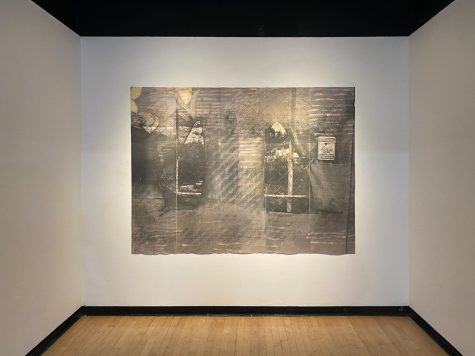
I am a parenting student artist. I have done my A.A. as a pregnant student, and then my undergrad as a parenting artist student and my grad school. I have two kids.
EN: I want to talk about “Trans Iteration #1,” your recent solo show. I’m assuming that it’s about public transportation based on the title; I might have that wrong.
sK: Yeah, being trans non-binary, taking public transportation, always in transit and conversation, and I just like the prefix “trans.” I thought it was really interesting, and I also struggle with naming art, so it was nice being like, “okay, I can just call it trans.”
It covers anything that I want to talk about, because it’s more personal work. It’s what I’m doing, it’s how I commute, it’s trans-disciplinary — it’s all the “trans-es.” When I do another iteration, which I assume will probably be in my advancement in the spring, it’ll probably be “Trans Iteration #2.”
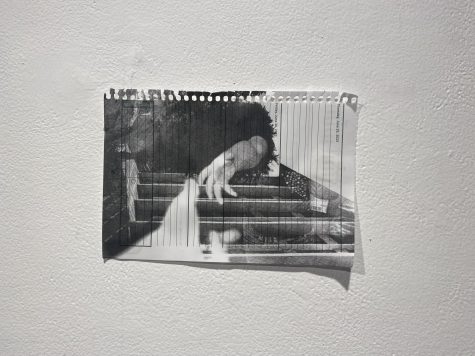
EN: I love hearing your explanation of the title. You say you don’t like naming your work, but that’s perfect. It encapsulates two very connected but different parts of your identity.
I am curious to hear you talk about your usage of double exposures. It’s seemed particularly prominent in “Trans Iteration #1.” Most of the works there were double exposures or more. What is it about double exposures that appeal to you? Why is this such a prominent feature of your work?
sK: When I first started at double exposures, it was by accident. I had double exposed the Sacramento Walk for PKD (Polycystic Kidney Disorder) with my public transit commute to school. So my first roll of film, I was like, “oh my God, what did I do?”

But it shows the Los Angeles Trade Technical College building in downtown L.A. — because that’s one of the stops I got on — the windows are broken, and you also see a cystic kidney. I found it so fascinating because they’re two very separate things in my head that unintentionally got married together.
JG: It was bound to.
sK: Yeah. The degrading building with this chronic health condition that my family goes through, it was really eye opening seeing it and then seeing these people walk through Sacramento who are now also walking through downtown L.A. with me through my commute.
Also, back in undergrad after my dad died, time just felt very slippery and weird and it didn’t make sense; it just felt like it all melted together. It was like, this person that I could ask about cultural stories and for advice is no longer here.
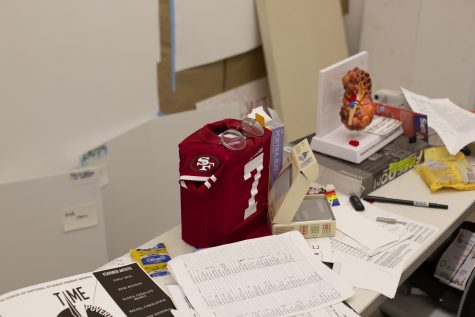
So I’ve noticed in times where, in life, I feel a lot of chaos personally, unintentionally, it starts really showing up in my photographic and art practice.
EN: Were you saying that the first roll of film you shot was an accidental double exposure?
sK: Yeah, because I lost track of the roll and I don’t know how, but the tail was sticking out, so I just threw it back in my camera.
A mentor, Alejandro Sanchez, said “you need to make a lot of work in grad school.” He was like, “sometimes you can’t make the work that, in your head, you really want to do. Sometimes you’ve gotta make work where you are.” And I was like, 20 hours a week on the bus — let’s go.
And It’s been really interesting too, because it started because after I saw that, and I’m like, wow, this is so fascinating, but also that oh my God, I’m leaving and just feeling very kind of more untethered, and I finally thought about I was starting to grow roots in a place.
So it started turning it into a study of like, how do other people connect with living in this big city that is constantly changing and it doesn’t feel like things we do like make a lasting impact?

And it was like, yeah, there are ways that people are leaving an impact through cement graffiti, or how people do community care and how they show up for each other on the bus and maintain safety through community without police. It has been really interesting and I’ve learned a lot.
JG: On your “Time Poverty” group exhibition, I know that the show was very accessible to kids, including the low mounting height and tactile nature of the exhibit. The kids running around felt like part of the exhibit. What made these things occur to you and in what other ways were kids included in the show?
sK: I think it’s a lot of trial and error being in art spaces, especially going to art openings with my own kids. It’s just things that I’ve noticed: I’m constantly picking them up, or I have nowhere to put this stroller or there’s stairs, so I physically can’t carry my kid. Like, “how do I negotiate these spaces?” Bobi Bosson and I really tried, and we’re really intentional about the heights we hang things.
Also, you’ve got to have a strong snack game if you want kids to go or be welcomed into your spaces. If you don’t have a strong snack game, they want to leave, and it makes it so much harder to be like, “hold on, I just really want to look at the art.”
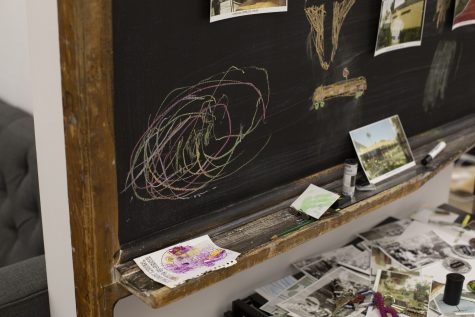
It was really cool also having other kids there, because if there are other kids, they’re going to want to play and have fun with them. They might not be as interested in the art, but they definitely spent more time looking and engaging with the art, which was really cool.
Especially for other parenting artists, they got to bring their kids and have conversations and practice talking about art with them. So, yeah: how do we start bridging that intergenerational gap in the art world?
EN: It definitely felt like it had a different energy than a lot of the exhibitions I see at school, with the kids running around. And also at one point they were given kazoos, which was super awesome.
I wanted to talk about two prints of yours that were orange-colored. A lot of people were really drawn to those — I saw it all over social media. I was wondering if you could talk about the techniques you used because I had never seen prints like this before, and also what it’s about.
sK: So, how I made those was I took photographs with my cell phone of my partner parenting our children, and this was my first semester in grad school. A feeling that I got when I first started grad school was, “I feel like I’m missing out.”
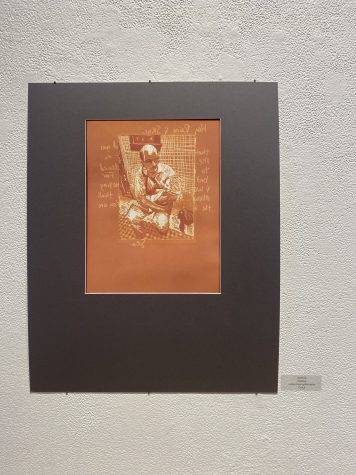
And a lot of my societal expectations, or how people framed me going to school, is “it’s a deficit to our family and a loss for our children,” instead of “this is adding to our family and opening opportunities for me.” So it’s dealing a lot with that internal struggle.
But also, as a non-binary person that did birth these amazing human beings, it was really weird that I could step back and let someone else handle domestic work. It’s been really actually gender affirming as a non-binary person, being like, “no, it’s okay, I don’t have to do that domestic labor.”
I really like that they’re painted negatives because it acts as the process of memory, how it’s changing from the moment that we’re experiencing it — kind of like now, like we’re in the moment, we’re 3-D people — but if I were to make an image of it, now it’s a 2-D image and flat and we lose all that nuance. But then, what happens when it gets rendered another time? Now it’s in my personal hands. So it’s “what details do I think are important?”
Then from those painted negatives that I make, I make a lumen print. I take darkroom paper out of the darkroom and into the sun. That purple-y yellow is just the silver nitrate getting blown out.
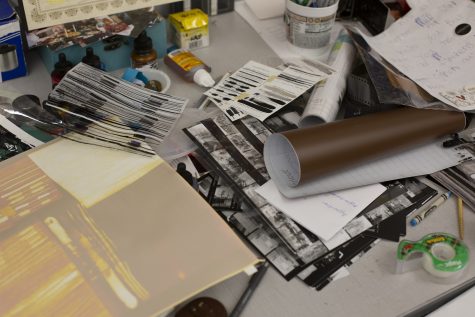
So you’ve got the painted negatives, usually in the middle, and then on the outside was paper from ephemera from my house.
My kids and I would write love letters to each other because we couldn’t see each other at night or I’d miss bedtime. So I’d be like, “hey, I hope something was so funny, you laughed so hard, you snorted.” Just ridiculous little things, but little things that only happened in this time frame.

I’m not viewing it as, “I’m missing this,” but “this is just part of how this time frame is for our family.”
EN: I can tell that there’s so much love in these prints. Hearing about your relationship with the type of printing too, it’s very heartwarming.
JG: Absolutely. Have there been any reactions where something you created that had a personal element in it also resonated with someone else?
sK: Yeah, I think that’s happened more with my parenting artist stuff; that has resonated a lot. I think I’m starting to get a lot of traction with my kidney stuff with people who are like, “I don’t totally get it, but I follow you.”
Then also with the really technical darkroom-messing-around stuff, photographers love that. They’re always like, “let’s geek out, I want to hear about this!” Especially for people who like geeking out and just messing around in the darkroom, we’re a small niche, but we’re very, very enthusiastic.
JG: I can see it in both of you.
EN: We could talk about this for a long time.
sK: It’s the El and sea “we’re just going to geek out about photography now” show.
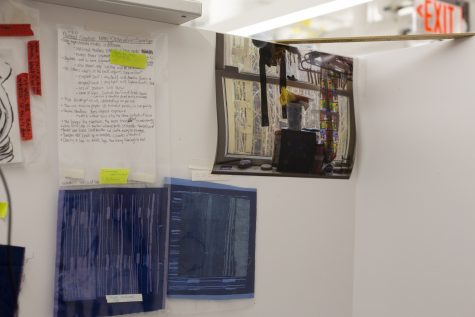
EN: On showing your work to others, the work about kidney disease — has that been shown publicly a lot yet, or is it in progress?
sK: Yeah, it’s a work in progress, still. I do have a show opening Sunday, Oct. 29 from 5 to 7 p.m. in the Merlino Gallery between FA-2 and FA-3. The galleries ideally will be open Monday Oct. 30 through Thursday Nov. 2 between noon and 5 p.m. the week following the opening.
EN: Right on campus for anyone to walk into, for free.
sK: Yeah, for free. It’ll be a little bit more interactive so that people can add their handprint. Hopefully, I’m thinking it will be a little bit educational, a little bit interactive. Bring your own photo if you have someone who’s died of chronic kidney disease — I know it’s not a super fun thing, but it is also over Dia de los Muertos, so I thought it would be a fun way to bring the community together.

For any students who do have parents who have died from chronic kidney disease, I want them to make sure they know they’re not alone.
JG: Absolutely.
sK: Especially for any nursing students that are interested, it’s a patient perspective and if I’m there, always hit me up. I love answering questions and talking to people. Just love me through the awkward phase and then we’ll be good.
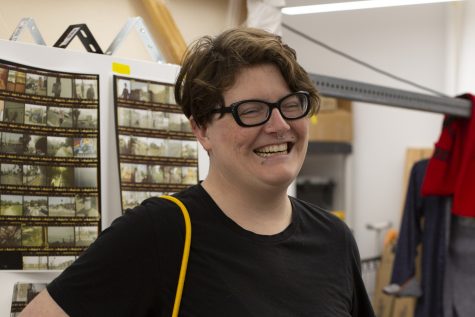
Hosts: Julia Goldman, El Nicklin
Guest: sea Krob
Editor: Julia Goldman
Producers: El Nicklin, Aidan Swanepoel
Like, comment, and follow us on your favorite platform for more content!
Apple Podcasts
https://podcasts.apple.com/us/podcast/daily-49er-podcasts/id1488484518?uo=4
Google Podcasts
https://www.google.com/podcasts?feed=aHR0cHM6Ly9hbmNob3IuZm0vcy9kMzEwMjEwL3BvZGNhc3QvcnNz
Spotify
https://open.spotify.com/show/4HJaqJep02kHeIQy8op1n1
Overcast
https://overcast.fm/itunes1488484518/daily-49er-podcasts

